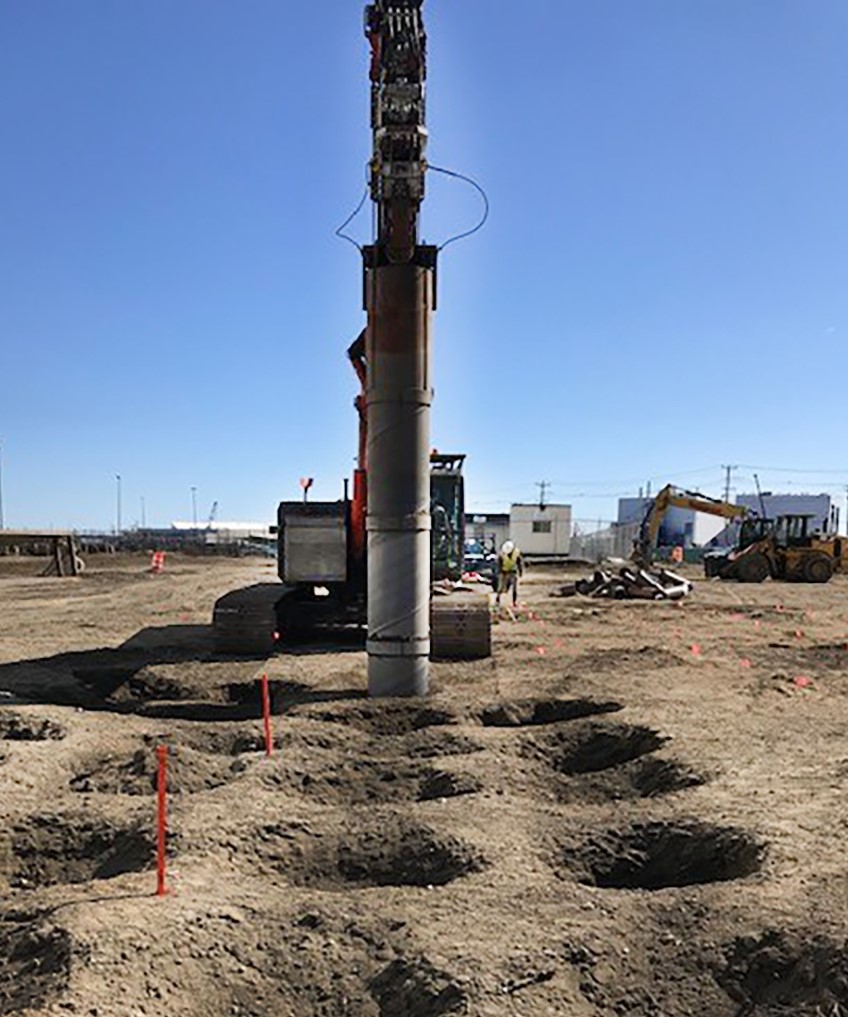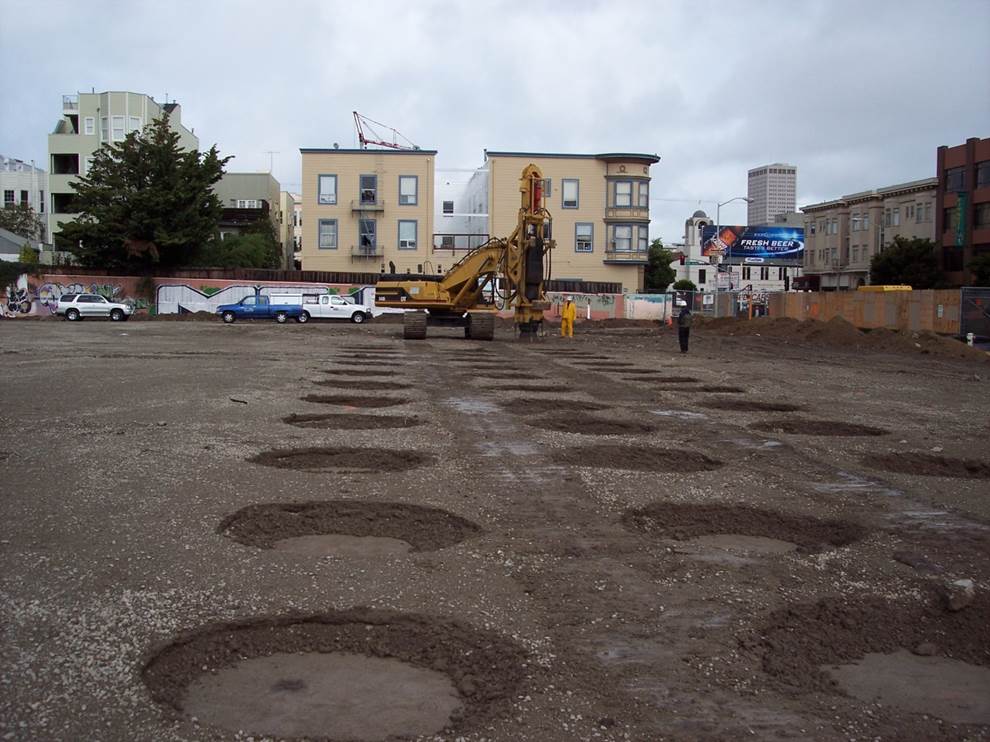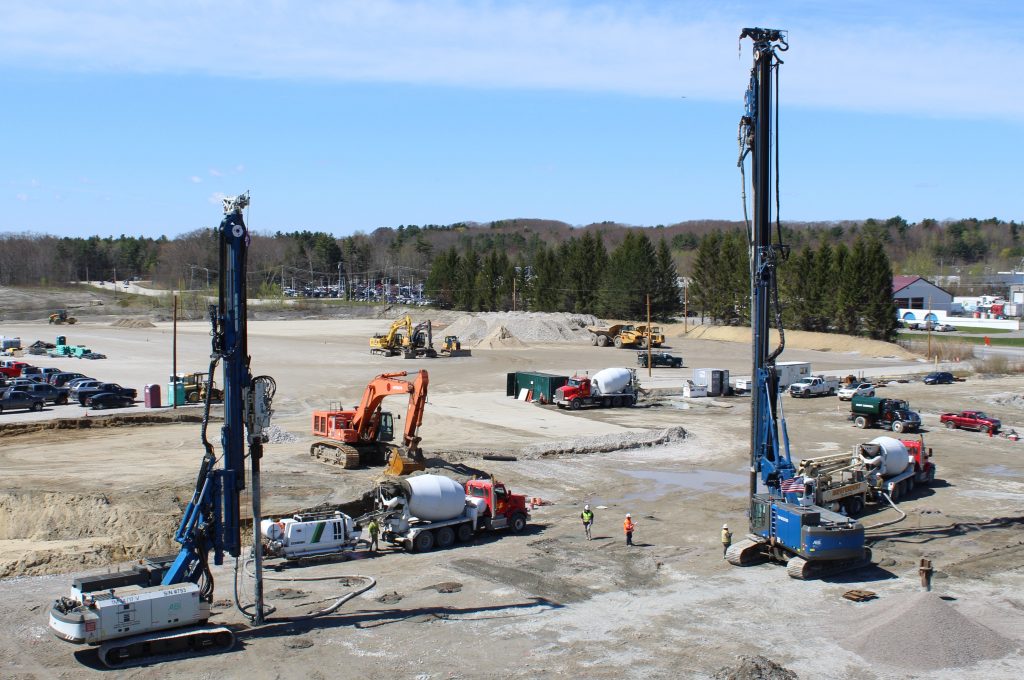Our Ground Improvement Division helps engineers, developers and contractors develop sites that have poor/unsuitable geotechnical conditions using ground improvement methods that allow for conventional footing and slab-on-grade foundation systems. Our ground improvement methods include:
Geopier® Rammed Aggregate Pier® Elements:
Rammed Aggregate Pier (RAP) elements consist of stiff columns of rammed aggregate that are constructed with a patented displacement mandrel. The displacement mandrel generates little to no excess spoils and eliminates the need for casing or dewatering. RAPs can also be grouted (aka “GAPs”) to form a rigid inclusion that provides enhanced stiffness through relatively soft soil layers (such as organics or soft clay). Visit here for more info on RAPs
Geopier GeoConcrete® Column Elements:
Two GeoConcrete Column (GCC) crews operate on a site near Portland, Maine.
Rapid Impact Compaction:
Rapid Impact Compaction (RIC) is a ground improvement method that densifies existing surficial granular soil layers up to about 10 to 15-feet-thick. RIC is performed with a self-contained hydraulic hammer assembly equipped with a large-diameter tamping foot. The hammer assembly and tamping foot are mounted on the front of a large, tracked excavator. RIC is typically performed in a tightly spaced grid pattern throughout the proposed building footprint area. At each RIC grid point, the tamping foot delivers high-energy compactive “Drops” in rapid succession. Soil density is increased uniformly across the site, resulting in improved settlement control and enhanced bearing capacity. Visit here for more info on RIC
Vibratory Probe Compaction (VPC) on a site in southern Rhode Island
Vibratory Probe Compaction:
Vibratory Probe Compaction (VPC) is a deep ground improvement method that densifies loose, clean granular soils in-place (above or below the groundwater table). VPC is a dry process that does not require (messy) water jetting, earth berms, or other premium site costs. VPC consists of repeatedly driving and extracting an open-ended, large-diameter steel pipe into the ground using a large, high-frequency vibratory hammer. The vibrations and lateral displacement cause the soil particles to rearrange into a denser configuration. VPC is carried out in a grid pattern across the site; each probe location receives multiple cycles of treatment depending on the desired results and the site response during driving. Soil density is increased uniformly across the site, resulting in improved settlement control and enhanced bearing capacity. Visit here for more info on VPC


